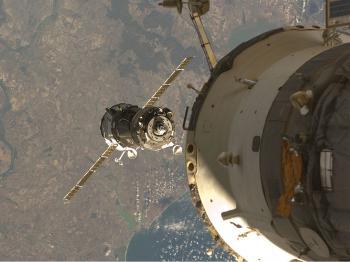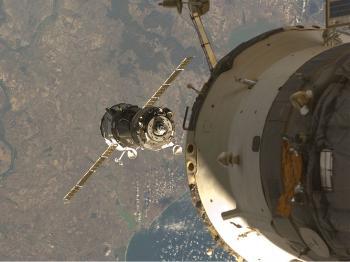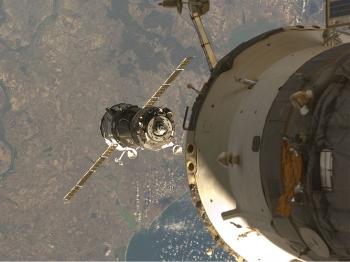Space Station Streams Live Video to Earth
Internet users can watch live streaming video from the International Space Station via NASA’s website.

HOW’S THE VIEW UP THERE: The Soyuz TMA-13 spacecraft docks at the International Space Station on October 14, 2008. NASA
|Updated:





